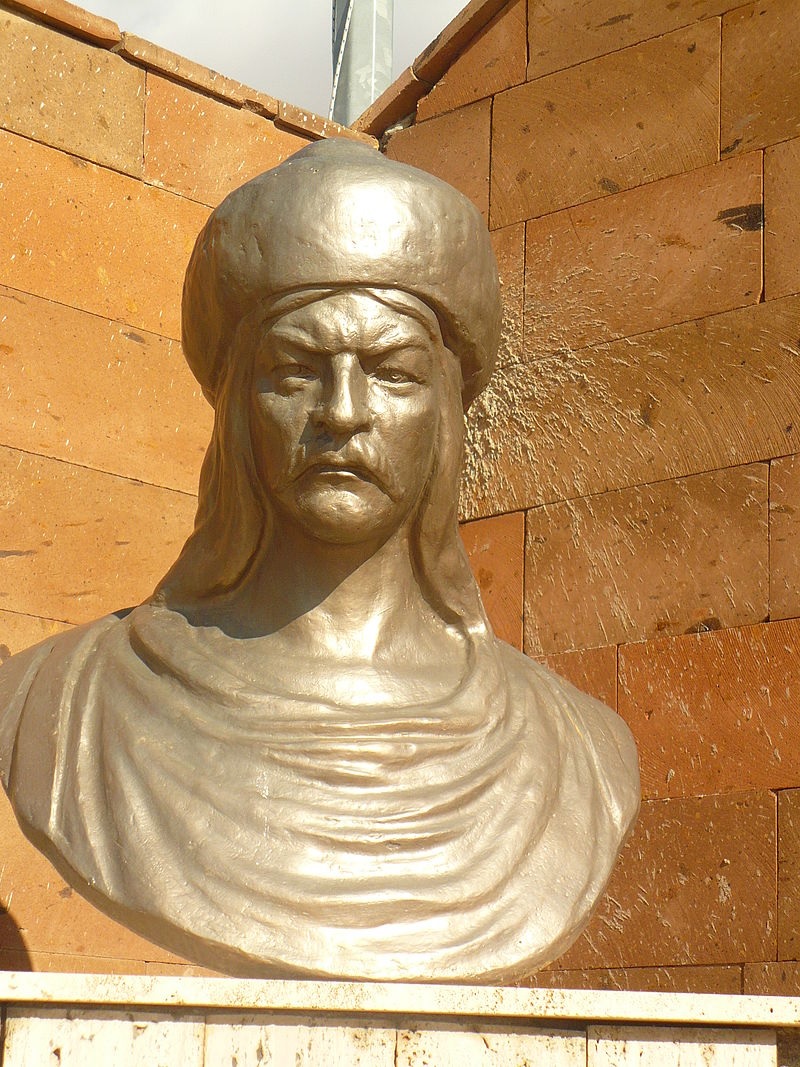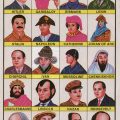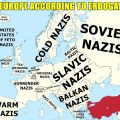Gli xiongnu e le origini della civiltà turca
(Carlo Pallard, “East Journal”)

The term “Turks” used to indicate Turkic people of Eurasian steppe appeared only in the 6th century AD, while the first written evidence of a Turkish language dates back to the following century. There is no doubt that peoples belonging to the Turkish ethno-linguistic group have existed for at least a millennium, although it is often difficult to distinguish these early Turks from related peoples – especially the Mongols – with whom they shared customs and traditions. In absence of sources that can attest their language, the archaeological finds aren’t are not enough to testify an extremely homogeneous culture common to all steppe peoples.
The ancestors of the Turks certainly lived from time immemorial in the Siberian taiga. At the beginning they had to be simple hunter-gatherers, while later they specialized in breeding reindeers. Around the middle of the first millennium BC the proto-Turkish tribes began to move south and settle in a region between the Altaj mountains and Lake Baikal, with its center in the Orhon valley, north of present-day Mongolia. This territory is moreover easily identifiable with the mythical ancestral land that the Turks call Ötüken in their legends.
The emergence of Turks and Mongols determined the development of a new equestrian culture of the steppe, which overlapped the one of Indo-European nomads – Scythians, Tocharians, Sarmatians, etc. – who had dominated the Eurasian plateau in previous centuries. Although many mutual cultural influences, in the long run the clash between the two groups was inevitable, and ended with the affirmation of the new arrivals even before the beginning of the Christian age.
In the middle of the third century BC among the chief tribes of this indefinite proto-Turkish nomadic universe emerged the figure of Teoman (Tou-man in Chinese sources). After establishing himself as the most important Turkish-Mongolian tribal lord, by subduing and forcing the others to join him, he began to clash victoriously with Indo-European nomads Yuezhi and carried out numerous raids in China. In Chinese sources, the tribal confederation created by Teoman is known as Xiongnu, and constitutes the first major political reality in the history of Eurasian nomads.
It was not Chinese reprisals that provoked Teoman’s downfall, but family intrigues and the struggle for succession. In 209 BC the eldest of his sons, the bright Mete (Mao-tun in Chinese), killed him and took his place, putting his brothers and his stepmother to death. Mete proved to be a political and military genius such as to overshadow his father’s glory. He enlarged and consolidated the tribal federation created by Teoman, and with this renewed military power he was able to defeat the Yuezhi, killing their ruler and occupying their territories. Having achieved total hegemony on the Mongolian plateau, Mete invaded China and forced Chinese emperor to offer him a princess and give him Ordos Plateau.
The historical figure of Mete finds a confirmation in Oğuz Khan, the legendary forefather of the Turks. Beyond the symbolic elements typical of a myth, the deeds of Oğuz are very similar to those of Mete. Both showed their military prowess at a young age, seized power through parricide and established a large tribal confederation. The setting of the story is also similar, as is the direction and modality of the conquests.
The Xiongnu extended their control over a territory of considerable extension: from the North, the Mete domains extended South to the Gansu region, West to Lake Balkhash, while East to the entire northern bend of Yellow River. A real empire had therefore arisen, destined to dominate the steppes in the following four centuries. A developed civilization began to form among the Xiongnu, in which we can see the political and religious institutions that will be typical of the Turks. The political and administrative system was made up of a federation of tribes under the direction of a sort of emperor (Chanyu) coming from a family considered sacred. In the era of Teoman and Mete also appears Tengrism, the complex religious conception of the Turks and the other steppe peoples.
The Xiongnu were a tribal confederation almost certainly composed of both proto-Turkish and proto-Mongolian elements, to which must be added probably elements of Indo-European origin gradually assimilated by the Turkish-Mongolian rulers. Moreover, this is a completely normal situation which would have been repeated in many of the great Eurasian empires. In the absence of any information on the languages they speak, it is impossible to establish with certainty the relationships between the different ethnic components.
However, it is significant that when the first nominally and consciously Turkish political subjects were born, they would claim the legacy of Xiongnu and take over their political, social and religious institutions. Regardless of the language actually spoken by Teoman and Mete, it is indisputable that the empire they created laid the foundations for Turkish civilization, which without the contribution of the Xiongnu would not have been possible.







